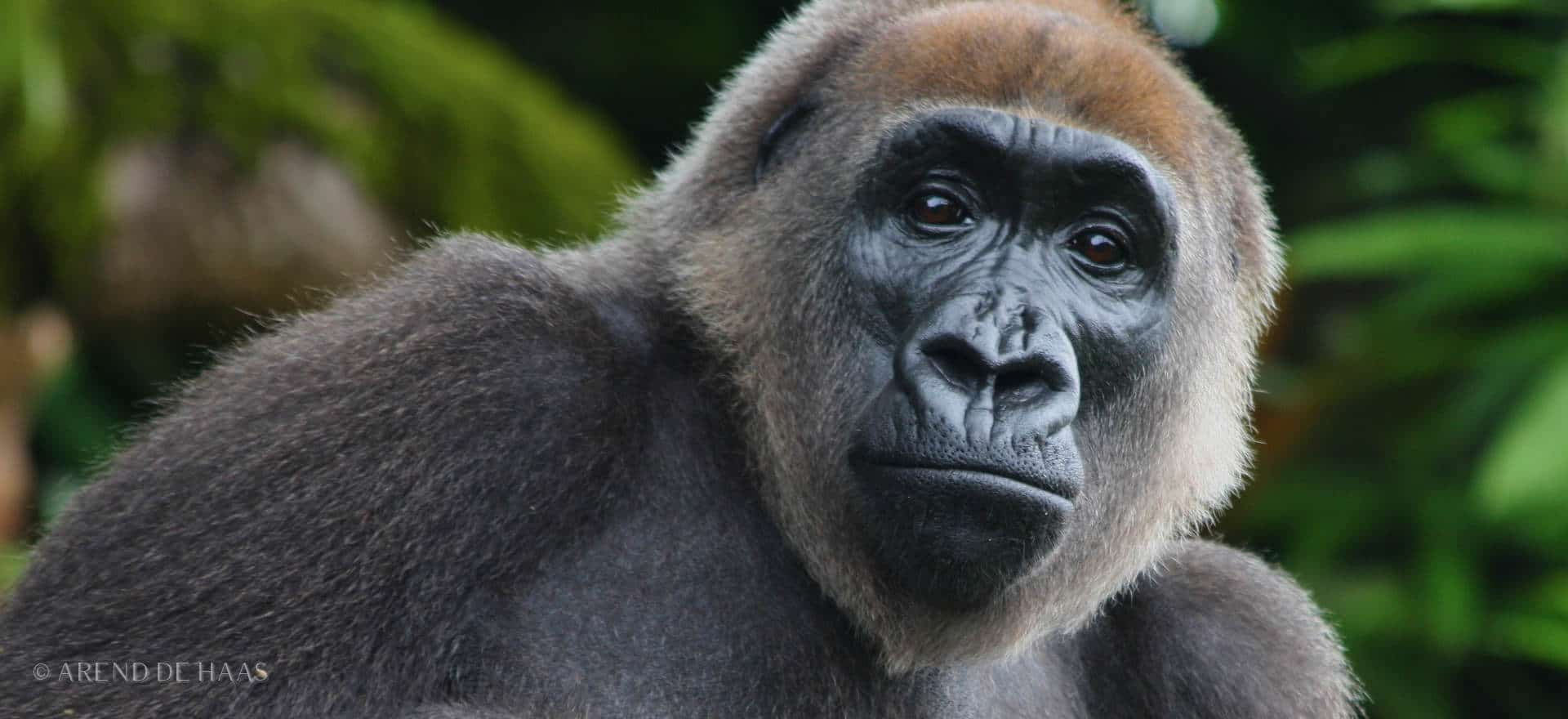GENETIC ANALYSIS OF CROSS RIVER GORILLAS
Genetic analysis of samples from various Cross River Gorilla sites found their situation to be more hopeful than was previously thought. Rather than small, isolated groups, there had been migration between sites within the current generation of gorillas. Evidence of a substantial decline in numbers within the last 200 years, was also revealed however, probably a result of the spread of firearms for hunting as well as habitat destruction.

The gorillas at Bechati-Fossimondi-Besali have yet to be analysed. They are likely to form a separate subpopulation, since there is such a large distance between them and the rest of the gorillas. Testing of these other groups revealed that they form three connected sub-populations, with the Afi and Kagwene gorillas being separate from the large central subpopulation, although still occasionally exchanging genes.
The eight groups in the central subpopulation are all connected by continuous forested lowland, with the exception of Mone, which is divided from the rest by a small road and scattered farmland.
Afi is separated from the other sites by farmland and the highway. Kagwene remains connected by a narrow corridor of forest to Mbulu, but is mostly surrounded by farms and grassland, and has apparently received no recent genetic input from elsewhere.
The study found two male and two female gorillas who had migrated. Two of these had left the most isolated sub-populations, Afi and Kagwene, and joined the nearest groups in the central subpopulation, at Upper Mbulu and Mbe Mountain. Neither Afi nor Kagwene seem to have received any migrants. Both these groups are genetically homogenous, although one gorilla at Afi appeared to have admixed ancestry. The two other migrants were found in the Takamanda South and Mone North groups. These could not be definitively assigned to source groups, and so may have come from one of the sites from which samples were not able to be analysed. Several gorillas were found to have mixed ancestry, showing that migration is not only possible, but that the migrant gorillas have been able to reproduce.
Animals that live in areas of fairly dense gorilla population will not have to travel far before they encounter other individuals or groups, and make their new home. The gorillas leaving the small communities of Afi and Kagwene, where there seem to be only single social groups, must travel much further before they find a new group, and are likely to have to cross roads or disturbed forest to do so. This may have been the incentive for the two migrants from these subpopulations to have travelled so far, over such difficult terrain, while gorillas from other sites had not made the reverse journey.
Of the 71 individuals from which genetic samples were analysed, eight were found to either be migrants themselves, or to have recent ancestry from more than one locality.

